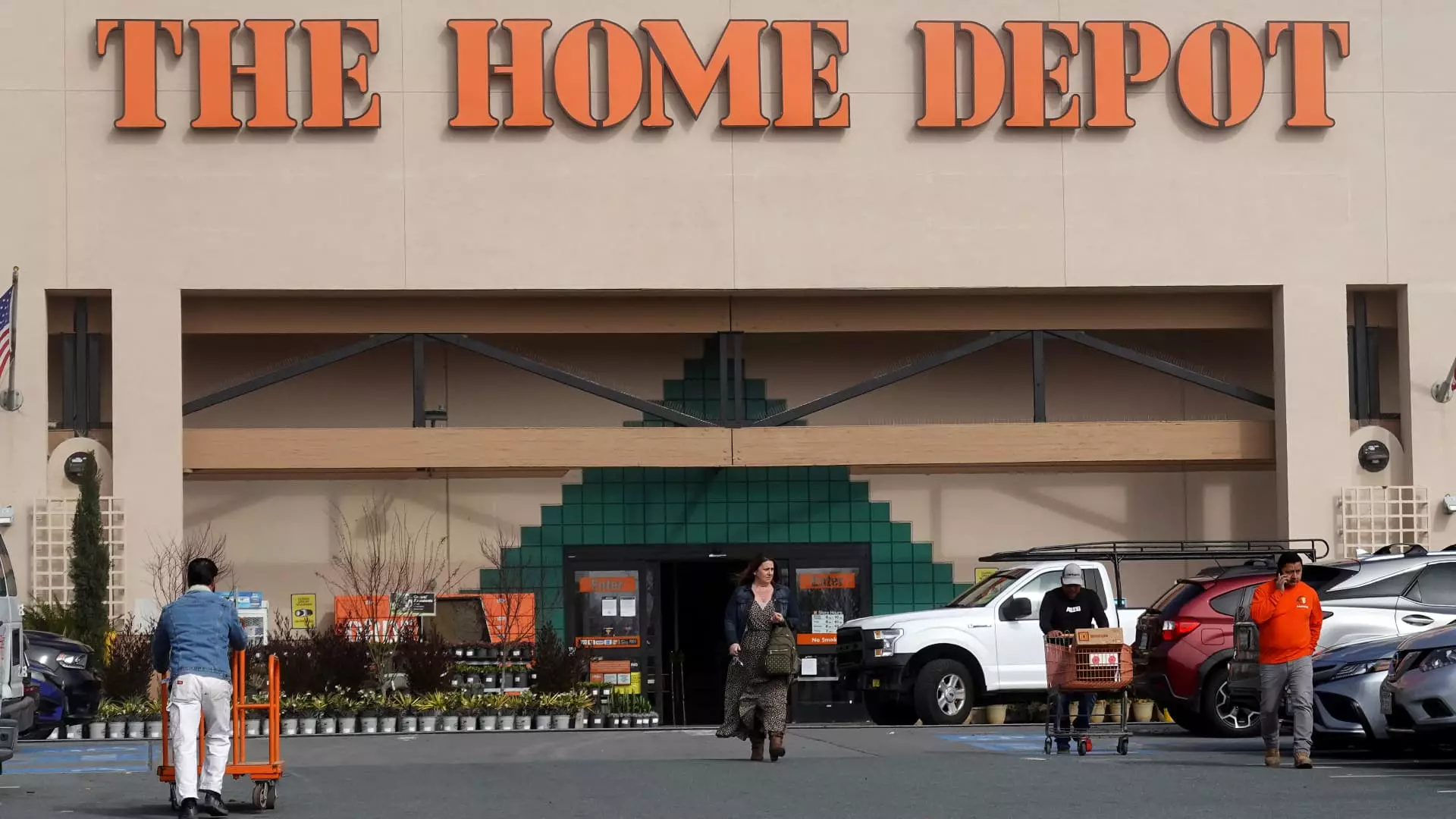As the warm weather descends upon the United States, Home Depot has strategically initiated its Memorial Day outdoor sales event, positioning itself for what CEO Ted Decker aptly labels “go time.” For retail analysts like Jim Cramer, this period represents a nullification of the winter lull and a tremendous opportunity for home improvement retailers to capitalize on the gardening craze. The promotional period, which runs until May 28, offers remarkable discounts across plants, landscaping materials, and big-ticket items, including grills and patio furniture. It’s not merely a standard sales event; it’s Home Depot’s attempt to pull customers into physical stores, leveraging the collective anticipation of sunshine and outdoor living.
This seasonal emphasis on outdoor goods isn’t just a gimmick; it reflects deep-rooted consumer behavior. Home improvement retailers thrive during spring and summer as people invest in their homes and yards, transforming the contractor landscape. In fiscal 2024, Home Depot’s outdoor and gardening sales accounted for a staggering $20.83 billion—a figure that illustrates its significance within the company’s broader sales strategy. This figure contributes approximately 13% of total revenues, dwarfing other categories such as lumber and paint.
The Numbers Game: Revenue and Expectations
Despite the upbeat tone surrounding the outdoor sales, there’s a gritty undercurrent of uncertainty that investors must navigate. Analysts are already eyeing the forthcoming earnings report with cautious optimism, projecting a modest 8% year-over-year increase in revenue to $39.3 billion for the first quarter. This trajectory is potentially stymied by complicating economic elements—including elevated mortgage rates and lingering tariff issues, which have often been detrimental to consumer sentiment.
What makes this situation even more complex is the unpredictable nature of housing turnover—the key driver behind Home Depot’s stock performance. Mortgage rates, currently hovering at just under 7%, have also put a wet blanket on housing demand, punctuating the need for a rate drop below 6.5% to fuel a more buoyant market. Analysts and investors alike are glued to upcoming indicators, waiting for signs of a rebound.
Potholes on the Path: Challenges Ahead
In light of this precarious backdrop, the counsel from Bernstein analysts serves as a wake-up call. Their warnings about unfavorable weather and weak consumer sentiment, coupled with mixed performance from competitors, suggest a dire first quarter for Home Depot. These assessments underscore how vulnerable the retail giant is to external economic pressures.
Indeed, the very essence of the home improvement industry is at the mercy of broader economic trends. The mixed performance of its peers indicates that Home Depot might not be an isolated case; the entire home improvement sector is battling headwinds. Fortunately, there have been some flickering signs of optimism, particularly in contractor circles. A recent survey by Morgan Stanley indicated an uptick in demand for significant projects, reigniting hopes for better performance as the year unfolds.
Home Depot’s Position: Resilience in Uncertain Times
To its credit, Home Depot has shown resilience during past market downturns. Despite the company’s shares declining approximately 2.5% year-to-date, maintaining an optimistic outlook seems essential. CEO Ted Decker remains undeterred, asserting that Home Depot is positioned to thrive irrespective of tariff volatility—an assertion that reflects a firm belief in the company’s long-term viability.
However, skepticism lingers. The broader market has seen a 1% gain in the S&P 500, which raises questions about why Home Depot is trailing so far behind. At nearly 12% below its record high of over $431 per share, the question remains: is this dip a buying opportunity or a red flag? Cramer himself touts that, though unsettling, the situation may lead to a resurgence in the latter half of the year—as anticipations of Federal Reserve rate cuts emerge.
Looking Forward: The Road Ahead
In a landscape filled with unpredictability, Home Depot finds itself at a crossroads. For investors, the impending earnings report will serve not just as a gauge of the company’s current standing but as a bellwether for the resilience of the retail sector at large. While the allure of outdoor sales may temporarily buoy consumer interest, the fundamental driver of Home Depot’s financial performance—the housing market—remains uncertain.
Ultimately, should mortgage rates lower and demand for home improvement projects surge as anticipated, Home Depot could find itself not merely surviving but thriving in a once-cautious market. The next few weeks will be critical, as time will tell whether the auspicious optimism of spring can indeed translate into substantial profits or whether external pressures will counterbalance any gains the brand aims to make this season.

